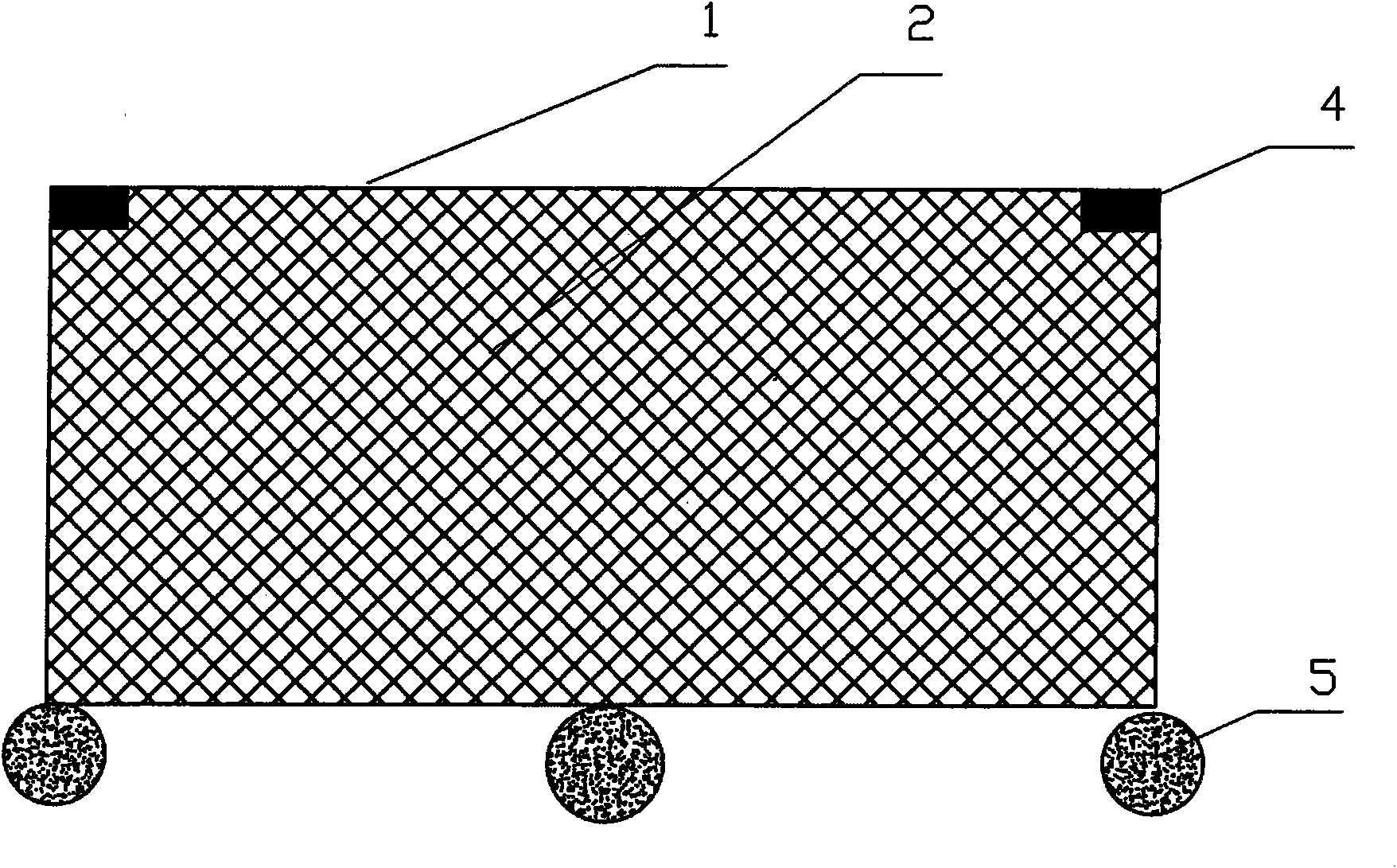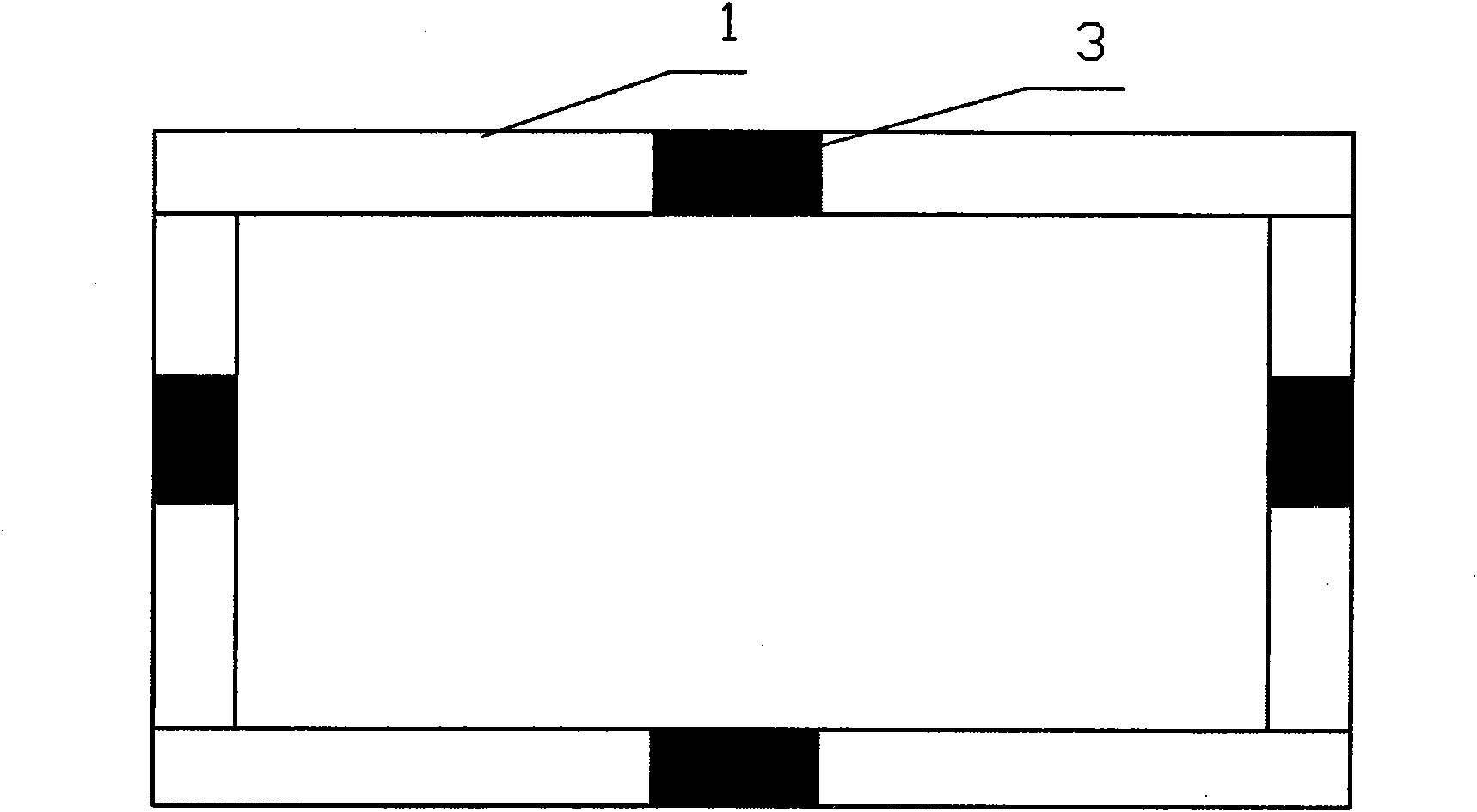Cage and method for breeding stichopus japonicus on sea
A net cage and sea area technology, which is applied in the field of sea cucumber seedling cultivation in sea cucumbers, can solve the problems of complicated operation, high risk, and high labor intensity of workers
- Summary
- Abstract
- Description
- Claims
- Application Information
AI Technical Summary
Problems solved by technology
Method used
Image
Examples
Embodiment Construction
[0020] The present invention will be further described below in conjunction with accompanying drawing:
[0021] As shown in the accompanying drawing, a sea cucumber sea seedling cage includes a frame 1 and a polyethylene net 2. The size of the cage can be designed according to the conditions of the sea area. Because the test is located in the waters of Xiaoshidao, Weihai, the specification of the cage for use in the test is : 5m×5m×4m (length x width x height), in which the mesh size of the outer mesh is 0.5cm, the mesh size of the inner mesh is 200 mesh silk mesh, the mesh size of the spawning box is 60 mesh mesh silk mesh, and the net cage The materials used are wood, floats, polyethylene mesh, sieve tulle, polyethylene rope, stone bags, etc.
[0022] Sea cucumber sea seedling cage production: use 8 logs with a diameter of 20cm to build a square frame 1 on both sides, fix them with large-scale bolts, and spread the planks 3 with a length of 30 cm and a width of about 10 cm b...
PUM
 Login to View More
Login to View More Abstract
Description
Claims
Application Information
 Login to View More
Login to View More - R&D
- Intellectual Property
- Life Sciences
- Materials
- Tech Scout
- Unparalleled Data Quality
- Higher Quality Content
- 60% Fewer Hallucinations
Browse by: Latest US Patents, China's latest patents, Technical Efficacy Thesaurus, Application Domain, Technology Topic, Popular Technical Reports.
© 2025 PatSnap. All rights reserved.Legal|Privacy policy|Modern Slavery Act Transparency Statement|Sitemap|About US| Contact US: help@patsnap.com


